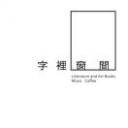Study on the Rural Human Resource Development Influence Factors and the Policies
时间:2022-10-05 12:39:38
[a] Postgraduate, mainly engaged in local government and human resource management. School of political science and public management, Southwest University, Beibei, Chongqing, China.
[b] Professor of public management, mainly engaged in local government management and public policy. School of political science and public management, Southwest University, Beibei, Chongqing, China.
* Corresponding author.
Supported by Southwest University humanities and social science research base project of 2011 (No.11SKB33) and Southwest University fundamental research funds for the Central Universities fund project of 2012 (No.SWU1209456).
Received 30 June 2013; accepted 20 August 2013.
Abstract
This article designs the government, rural human resources and market three factors, based on the existing research results. Through the questionnaire survey, using statistical methods to analyze the influencing factors of Chongqing rural human resources development. On this basis, from the government, human resources, market to put forward the Chongqing rural human resources development policy.
Key words: Rural human resources development; Influence factors; Policy response; Empirical analysis
INTRODUCTION
Human resources, a kind of major resource for human society, have been making big contributions to economic and social development. Rural human resources as an important part of human resources play a very important role in the process of new urbanization and rural construction. To make these resources fully utilized, a complete system must be developed to accumulate human capital and expand its ability. Rural human resources development is inclusive of all activities in the rural human resources for education, training and health care, etc. Rural human resource surely affected by many factors is not isolated. The key to rural human resources development lies in analyzing the relevant determinants and the corresponding influence power.
Research on human resource development, originated in the twenty or thirty’s of the twentieth Century, abroad is earlier, it has achieved fruitful results and practical experience. Early, research on human resources based on industrial psychology research, then more research payed attention to human capital. The early nineteen sixties, the United States of America economist Theodore Schultz put forward the theory of human capital, he thought: one’s human capital growth (the knowledge, skills, physical health, improving quality) made a contribution to economic compared with physical capital and labor to economic growth much more important(Schultz, 1961). Gary Becker thought: the human capital was the embodiment of people’s skills and production knowledge stock and was directly related to the level of cultural knowledge, occupation skill training, relevant experience with economic characteristics and the quality of the population in the workers on the comprehensive performance; the investment of human capital needed to consider the current economic benefits and future economic benefits (Becker, 1964). Renowned economist Marshall pointed out: human investment was the most valuable in all kinds of investments; father invested in education and study was prepared for the future work and profit which was similar to invest in the construction of factories in order to obtain the benefits (Marshall, 1965). Searl studied the effects of on-the-job training to the human capital formation (Searl, 1996). Edward Dennison studied the contribution of education to economic growth(Denison, 2001).
REFERENCES
Amartya Sen, Poverty, & Famines (1982). An Essay on Entitlement and Deprivation (pp.55-57). Oxford: Clarendon Press.
Becker (1987). Human Capital (pp.332-335). Peking University Press.
Demirguc-Kunt, Asli, & Anita M. Sehwazr (1996). Taking Stock of Pension Reforms around the World (pp.21-22). A Paper Delivered at the World Bank―Economic Development Institute conference on “Pension Systems: From Crisis to Reform”, Washington. DC..
Dy, H. Y., & Wu, J. (2009). Chongqing rural human resources development Promotion Space and the Mechanism Designing. Township Economy, (10), 71-75.
Fen, J. S. (2011). Effecting Factors of the Exploitation of Rural Human Resource and Countermeasure Analyzing. Chinese Talent, (7), 13-14.
Hu, P. B. (2009). Dimension Structure and Measurement Rural Human Resources Development Effect Factors Based on the Central Province of Field Investigation. Problem of Agricultural Economy, (7), 73-79.
Marshell, A. (1996). Memorials of Alfred Marshell (56-58). Edited by A. C. Pigou, New York.
Mulligan, C. B., & Xavier, S. M. (2001).Transitional Dynamics in Two-Sector Models of Endogenous Growth (pp.739-773). Quarterly Journal of Economies.
Marshall (1965). Principle of Economics (pp.44-46). The Commercial Press.
Pei, H. W., & Hu, P. B. (2007). Empirical Analysis Influencing Factors of Jiangxi Province Rural Human Resources Development and Utilization. Journal of Jiangxi Finance and Economics University, (6), 57-61.
Schultz (1990). Human Capital Investment. Beijing Economic College Press, 24-25, 28-30.
Shen, H., & Zhao, Y. L. (2011). Research on influence of Southwest Minority Area Human Resources Development in Rural Areas―Based on Rural Minority Areas in Southwest Four Provinces and 963 Survey Data. Exploration of Economic Problem, (9), 60-65.
Wu, J., & Du, H. Y. (2009). The Breakthrough of Balancing Urban and Rural Development: the Development of Resource of Rural Human―Based on the Endogenous Effect Analysis. Realistic: “Three Agriculture” Problem Studies, (4), 82-84.
Wu, J., & Shen, L. J. (2011). The Interaction between UrbanRural Harmonious Development and Rural human Resources Development―Evidence from Chongqing City. Journal of Southwestern Normal University (natural edition), (2), 108-114.
上一篇:Perception of Geography by Training Teacher... 下一篇:Puzzle of Growth and Futher: Growth and Val...
文档上传者
热门推荐 更多>
- 1A Study on North American Stereotypes ...
- 2A Study on English Vocabulary Teaching...
- 3Bird Study
- 4Mammal Study
- 5A Study on Three Teaching Principles o...
- 6A Study on English Vocabulary Learning...
- 7study还是studies
- 8Study on the Symbolic Meanings of the ...
- 9A Study on Teaching Strategies of Engl...
- 10Advances In The Study Of Behavior
